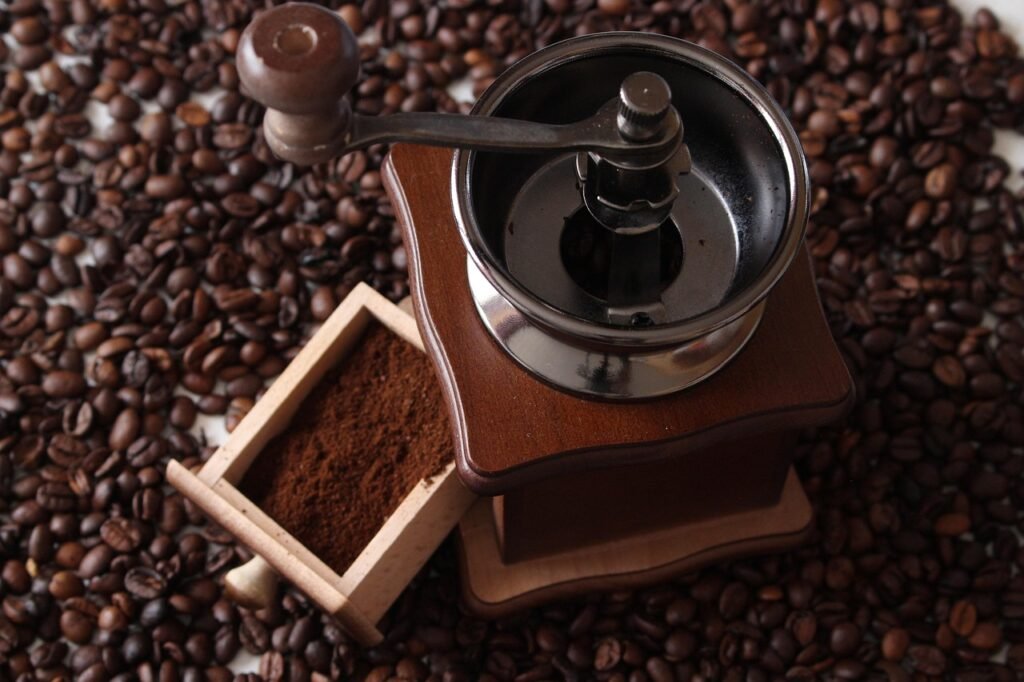
Community-Building Strategies for Independent Coffee Shops (That Actually Work)
Introduction Independent cafes win when they feel like the neighborhood’s living room and operate with the discipline of a great kitchen. Below is a quick
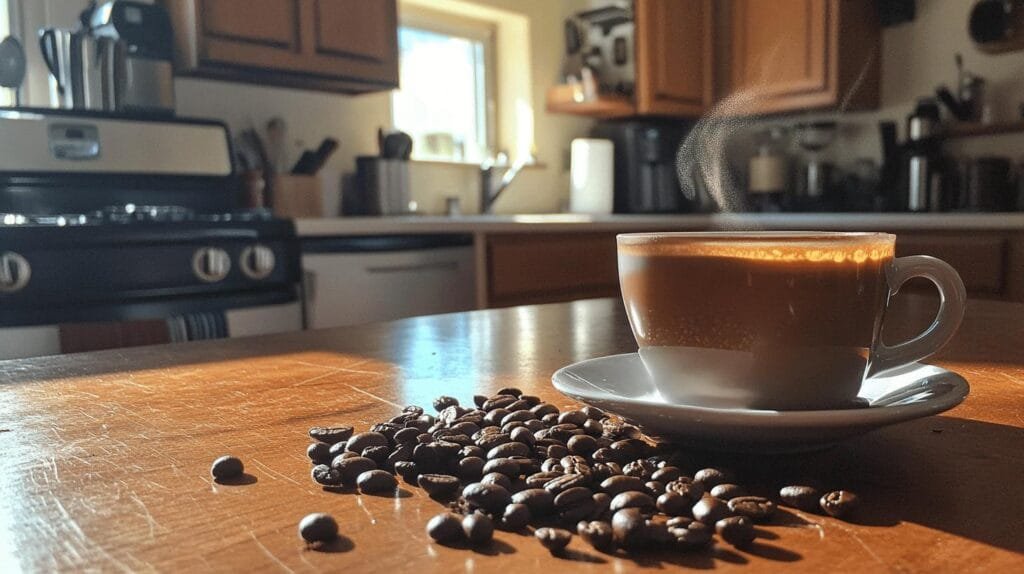
Is it possible that your beloved shot of espresso is packing more punch than you imagine? For many coffee aficionados, espresso is a staple in their daily routine, yet few understand the nuances behind its caffeine content. From a typical 63 milligrams per shot, espresso can fluctuate dramatically in caffeine strength, influenced by factors like the coffee bean type, roast level, and brewing technique. This article delves into the surprising realities of the amount of caffeine in espresso, aiming to provide coffee lovers with the insights needed to achieve that perfect balance in their espresso experience.
An average espresso shot has about 63 milligrams of caffeine. This amount isn’t fixed and can range from 30 to over 100 milligrams. Several factors can cause this variation, affecting the final caffeine concentration in an espresso shot.
Understanding these variables is crucial for controlling the amount of caffeine in espresso. Adjusting these factors lets consumers and baristas tailor espresso to personal preferences.
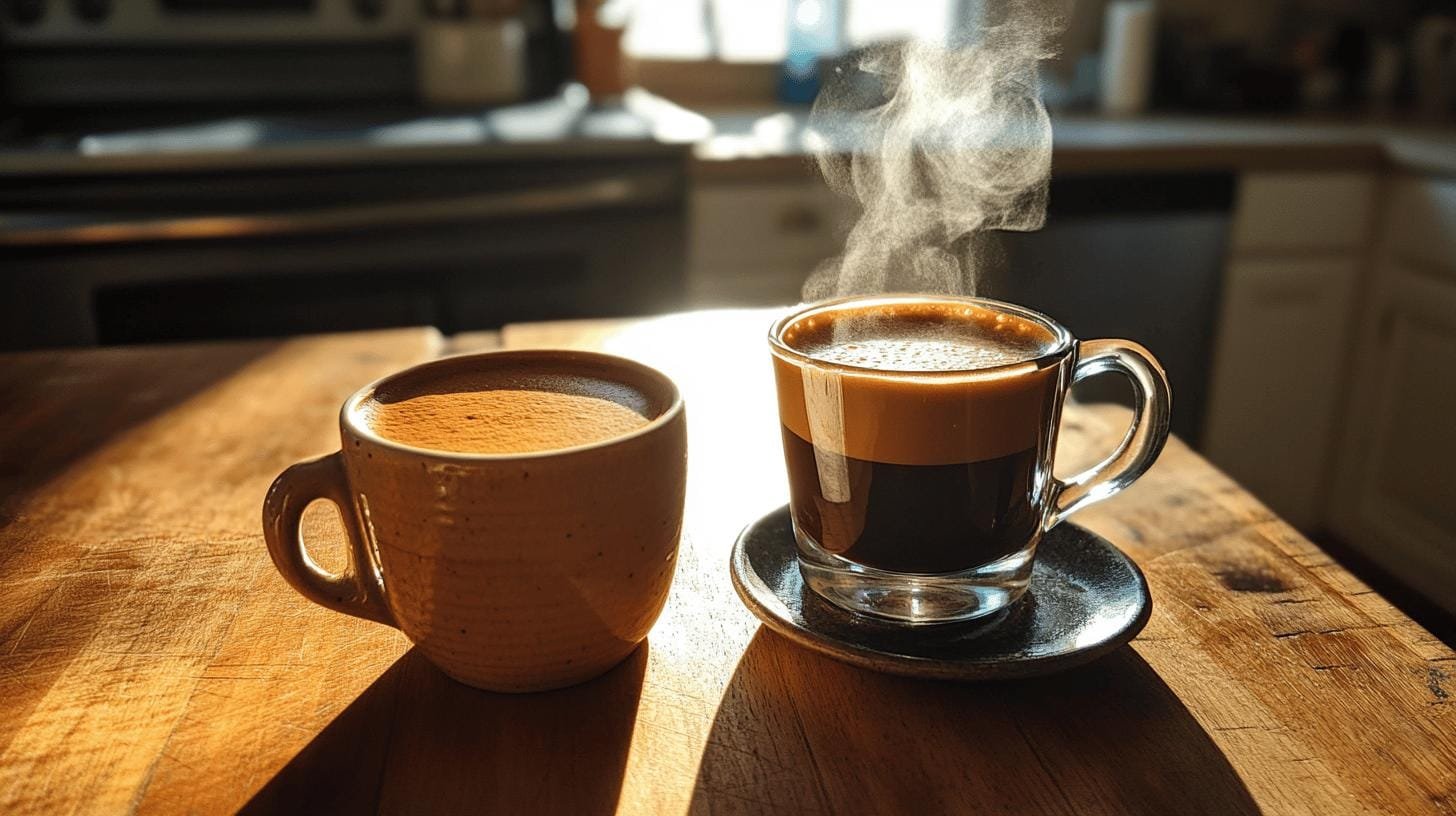
Espresso and coffee differ in caffeine content. An 8-ounce cup of coffee typically has about 95 milligrams of caffeine, more than a single espresso shot’s 63 milligrams. However, espresso has a higher caffeine concentration per ounce, perfect for a quick boost.
Espresso’s unique concentration is from its brewing method, making it a strong base for many coffee drinks. Espresso-based drinks like lattes often have multiple shots, increasing caffeine content. For example, a double-shot latte may exceed the caffeine in an 8-ounce coffee.
Understanding these differences helps enthusiasts tailor caffeine intake, balancing flavor and potency in each cup.
The amount of caffeine in espresso isn’t static. Various factors influence the final amount. Understanding these helps tailor caffeine strength to personal preferences and desired quality.
Robusta beans generally contain more than Arabica beans, heavily impacting espresso’s caffeine baseline. Robusta beans typically contain about 2.2-2.7% caffeine, while arabica beans contain around 1.2-1.5% caffeine.
Roast levels affect caffeine. Light roasts keep more caffeine due to roasting-induced chemical changes. Longer-dark roasts slightly decrease caffeine.
Brewing variables affect caffeine. Pressure settings, brewing time, and barista skills matter. Higher pressure and precise temperatures optimize extraction.
Barista skills, like tamping and grind size, also affect caffeine levels. A finer grind speeds extraction, potentially increasing caffeine.
By choosing beans, controlling roast level, and adjusting brewing, one can tweak espresso caffeine concentration. These changes help customize shots to match flavor preferences and caffeine needs.
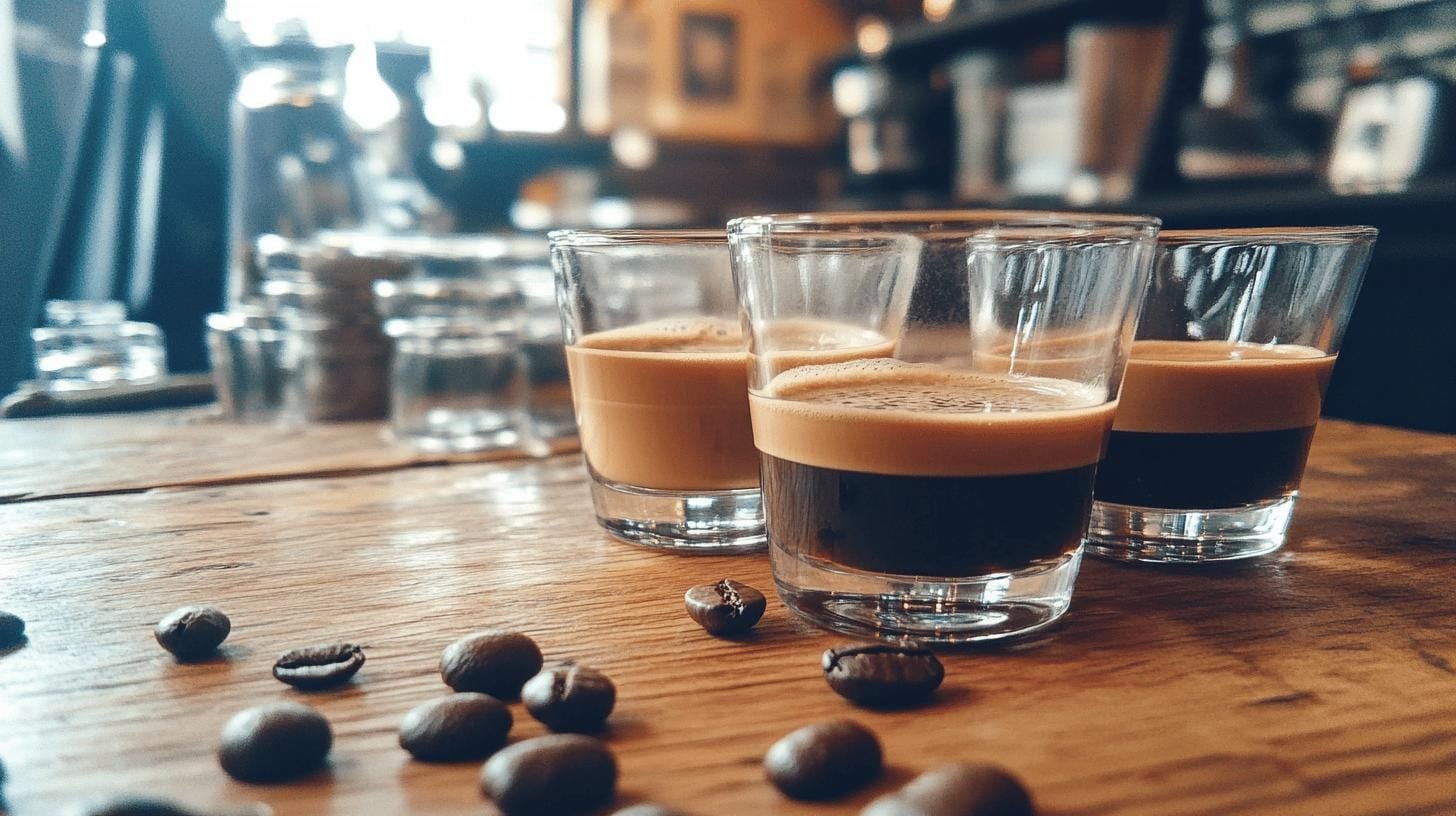
What’s the safe daily caffeine limit? For most adults, 400 milligrams is safe, equating to 6-7 espresso shots or 4-5 coffee cups. This helps balance caffeine benefits and avoid side effects.
Too much caffeine can cause:
Caffeine affects the body by boosting alertness and focus, popular for a mental lift. Espresso, with its concentrated caffeine, offers these benefits in a small dose. But, overuse can lead to dependency or worsen anxiety and disrupt sleep.
Managing caffeine intake involves considering personal tolerance and lifestyle. Monitoring espresso and other caffeine sources daily is key. Adjusting based on personal response and including decaffeinated choices keeps caffeine intake safe while enjoying its benefits.
Choosing home-roasted coffee beans is the best option for espresso. Home-roasting allows control over roast level and blend, greatly affecting caffeine and flavor. This customization offers a more satisfying coffee experience compared to mass-produced beans.
Home-roasting lets coffee lovers experiment with bean types and roasts, enhancing espresso quality and enjoyment. Using home-roasted beans allows crafting espresso that perfectly matches taste and caffeine needs, elevating the coffee ritual significantly.
Understanding the amount of caffeine in espresso is crucial for coffee lovers seeking a balanced experience. A single espresso shot’s caffeine content, typically 63 milligrams, can vary widely based on factors like bean type, roast level, and brewing techniques.
Comparatively, though espresso is caffeine-rich per ounce, an 8-ounce coffee generally contains more caffeine overall. Control over caffeine levels can be achieved by mastering brewing variables.
Safe caffeine consumption is essential, as excessive intake may lead to health issues. Embracing home-roasting offers coffee aficionados a chance to refine their coffee’s flavor and caffeine content, elevating their espresso experience.
A single shot of espresso typically contains about 63 milligrams of caffeine, but this can range from 30 to over 100 milligrams based on factors such as bean type and brewing variables.
An 8-ounce cup of regular coffee generally contains about 95 milligrams of caffeine, more than a single shot of espresso. However, espresso has a higher caffeine concentration per ounce.
Starbucks espresso drinks contain approximately 75 milligrams of caffeine per single shot. A double shot, or “Doppio,” contains 150 milligrams.
Consuming 200 milligrams of caffeine is moderate for most adults. The safe daily limit is up to 400 milligrams, equivalent to about four espresso shots or two standard coffees.
Excessive caffeine intake can result in jitters, sleep disturbances, and an increased heart rate. Long-term overconsumption may cause additional health issues.
The recommended safe caffeine consumption for most adults is up to 400 milligrams per day, which equals about 6-7 shots of espresso or 4-5 cups of coffee.

Introduction Independent cafes win when they feel like the neighborhood’s living room and operate with the discipline of a great kitchen. Below is a quick
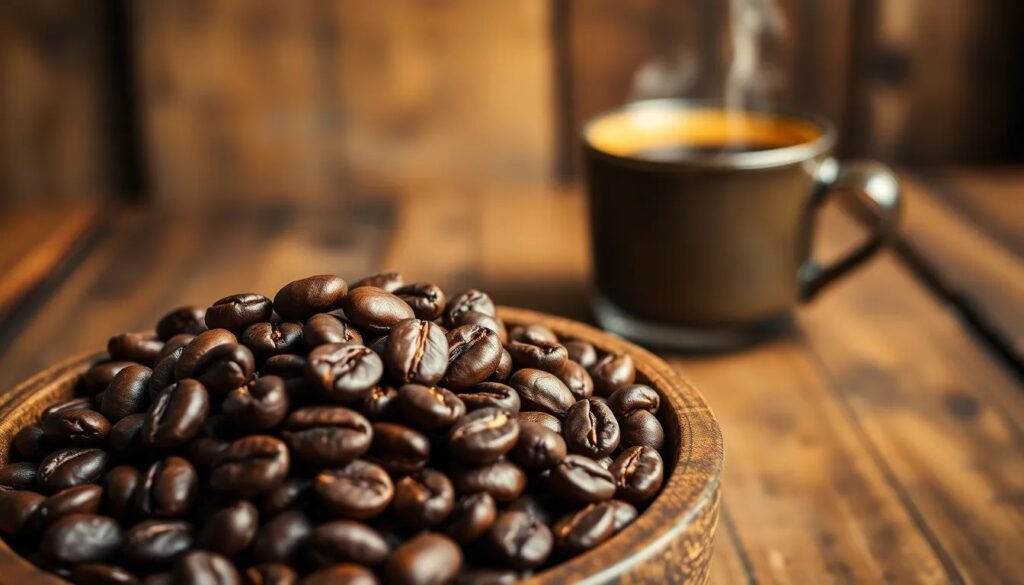
Discover how top specialty coffee brands create lasting loyalty through storytelling, sourcing, and community connection. Real tips from 6 industry experts.

Discover the ultimate showdown between two beloved coffee brewing methods: the French press and Chemex. Explore how each technique caters to distinct palates, with the French press delivering bold flavors and the Chemex presenting a bright, clean taste.

Unlock the secrets to brewing the perfect cup of coffee with our comprehensive guide on using a coffee scale. Discover how precise measurements enhance flavor and consistency while eliminating bitterness.

Discover how water temperature plays a vital role in brewing the perfect cup of coffee. This article delves into the ideal temperature range of 195°F to 205°F for optimal flavor extraction, enhancing the enjoyment of high-quality beans.

Discover the world of curated specialty coffee bundles, perfect for enthusiasts seeking quality and craftsmanship. This article explores the benefits of ethically sourced, small-batch beans from brands like Equipoise Coffee, offering diverse flavor profiles that elevate your brewing experience.

Discover the art of manual brewing to elevate your coffee experience! This article explores various techniques like pour-over, French press, and AeroPress, revealing how they enhance flavor and your connection to every cup.

Discover how to balance productivity and rest with the perfect cup of coffee. This article explores the art of brewing high-quality coffee to enhance your work routine while promoting mindful breaks.

Transform your morning coffee ritual into a mindful experience! This article explores the importance of slowing down to appreciate high-quality beans, ethical sourcing, and small-batch roasting.